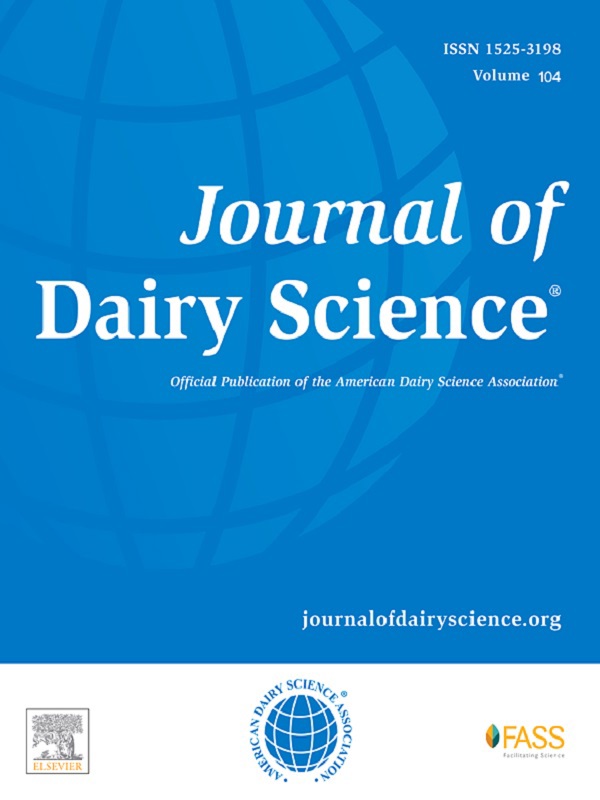Energy and nitrogen partitioning in dairy cows at low or high metabolizable protein levels is affected differently by postrumen glucogenic and lipogenic substrates
J. Dairy Sci. 102:395–412

Abstract
This study tested the effects of energy from glucogenic (glucose; GG) or lipogenic (palm olein; LG) substrates at low (LMP) and high (HMP) metabolizable protein levels on whole-body energy and N partitioning of dairy cattle. Six rumen-fistulated, second-lactation Holstein-Friesian dairy cows (97 ± 13 d in milk) were randomly assigned to a 6 × 6 Latin square design in which each experimental period consisted of 5 d of continuous abomasal infusion followed by 2 d of rest. A total mixed ration consisting of 42% corn silage, 31% grass silage, and 27% concentrate (dry matter basis) was formulated to meet 100 and 83% of net energy and metabolizable protein requirements, respectively, and was fed at 90% of ad libitum intake by individual cow. Abomasal infusion treatments were saline (LMP-C), isoenergetic infusions (digestible energy basis) of 1,319 g/d of glucose (LMP-GG), 676 g/d of palm olein (LMP-LG; major fatty acid constituents are palmitic, oleic, and linoleic acid), or 844 g/d of essential AA (HMP-C), or isoenergetic infusions of 1,319 g/d of glucose + 844 g/d of essential AA (HMP-GG) or 676 g/d of palm olein + 844 g/d of essential AA (HMP-LG). The experiment was conducted in climate respiration chambers to determine energy and N balance in conjunction with milk production and composition, nutrient digestibility, and plasma constituents. Infusion of GG and LG decreased dry matter intake, but total gross energy intake from the diet plus infusions was not affected by GG or LG. Furthermore, GG or LG did not affect total milk, protein, or lactose yields. Infusing GG or LG at the HMP level did not affect milk production differently than at the LMP level. Infusion of GG stimulated energy retention in body tissue, increased plasma glucose and insulin concentrations, decreased lipogenic metabolites in plasma, and decreased milk fat yield and milk energy output. Nitrogen intake decreased and milk N efficiency increased in response to GG, and N retention was not affected. Infusion of LG tended to increase metabolizable energy intake, increased milk fat yield and milk energy output, increased plasma triacylglycerides and long-chain fatty acid concentrations, and had no effect on energy retention. Infusion of LG decreased N intake but did not affect milk N efficiency or N retention. Compared with the LMP level, the HMP level increased dry matter intake, gross and metabolizable energy intake, and total milk, fat, protein, and lactose yields. Milk energy output increased at the HMP level, and protein level did not affect total energy retention. Heat production increased at the HMP level, but only when GG and LG were infused. The HMP level increased N intake, milk N output, and plasma urea concentration, tended to increase N retention, and decreased milk N efficiency. Regardless of protein level, GG promoted energy retention and improved milk N efficiency, but not through increased milk protein yield. Infusion of LG partitioned extra energy intake into milk and had no effect on milk N efficiency.